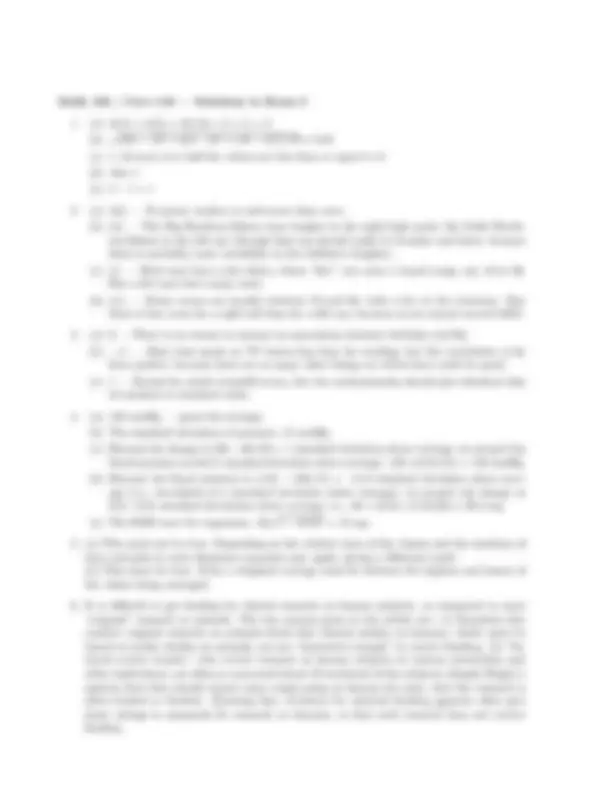




Study with the several resources on Docsity

Earn points by helping other students or get them with a premium plan


Prepare for your exams
Study with the several resources on Docsity

Earn points to download
Earn points by helping other students or get them with a premium plan
Community
Ask the community for help and clear up your study doubts
Discover the best universities in your country according to Docsity users
Free resources
Download our free guides on studying techniques, anxiety management strategies, and thesis advice from Docsity tutors
The solutions and questions from exam i of math 102 / core 143. It includes calculations for finding averages, standard deviations, medians, percentiles, interquartile ranges, and correlation coefficients. It also covers the interpretation of histograms and the use of statistical formulas.
Typology: Exams
1 / 4

This page cannot be seen from the preview
Don't miss anything!



October 7, 2008 Math 102 / Core 143 BX — Exam I
Show all work clearly for partial credit. An unsimplified answer like 12
3 .51 + 6/7 is usually worth more than 23.3, because it is easier to understand where it came from. If your calculator has buttons for statistical functions like average or standard deviation, do not use them for the computations below.
(a) jersey numbers of Colgate football players in the 2005 season (b) heights of people at a party of Big Brothers/Sisters and their Little Brothers/Sisters (c) the numbers of shirts owned by various men (d) scores on an easy statistics exam
(a) A person’s birthdate (number of days into the year) and his/her IQ. (b) The average number of hours per day a person spends watching TV and the hours he/she spends reading. (c) A child’s height measured in inches and the same child’s height measured in centimeters.
(a) the systolic blood pressure of a randomly chosen patient (with no information on his dosage). (b) the likely error in the estimate found in (a) (c) the systolic blood pressure of a patient whose dosage is 60 mg. (d) the dosage of a patience whose systolic blood pressure is measured as 110 mmHg. (e) the likely error in the estimate found in (d).
(a) The percentage of girls in that school who passed is larger than the percentage of boys who passed. (b) The percentage of girls who passed must be between 20% and 70%.
Some possibly useful formulas: √ average of (x − x)^2 σy ·
√ 1 − r^2
r = average of ((x in std units) · (y in std units))
z =
x − x σx x = z · σx + x
y − y = (sign of r) σy σx
(x − x) y − y = r σy σx
(x − x)
Math 102 / Core 143 — Solutions to Exam I
√ (6(1 − 3)^2 + 3(2 − 3)^2 + (18 − 3)^2 )/ 10 ≈ 5. 02 (c) 1, because over half the values are less than or equal to it. (d) Also 1. (e) 2 − 1 = 1
√ 1 − (0.8)^2 = 12 mg.